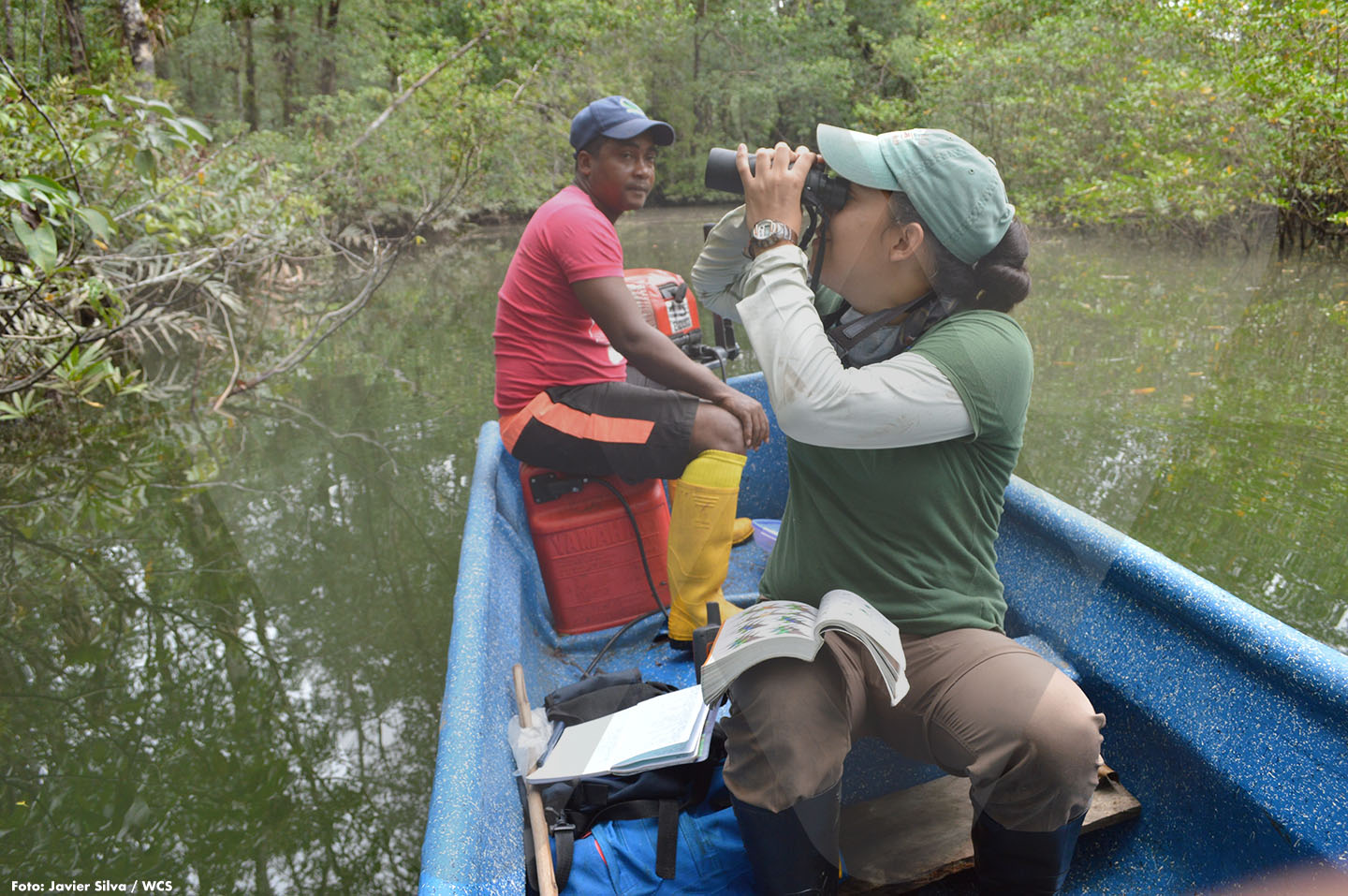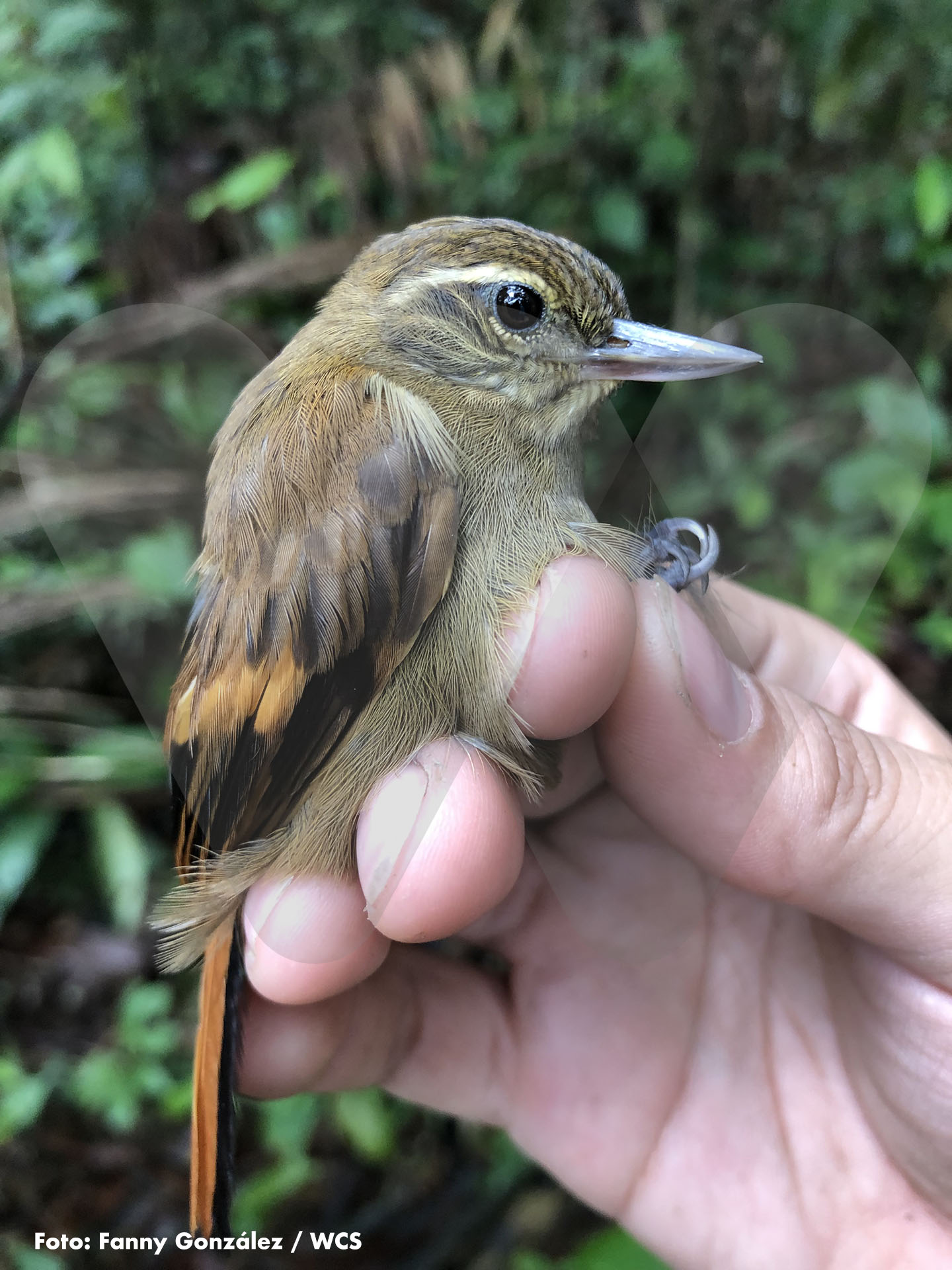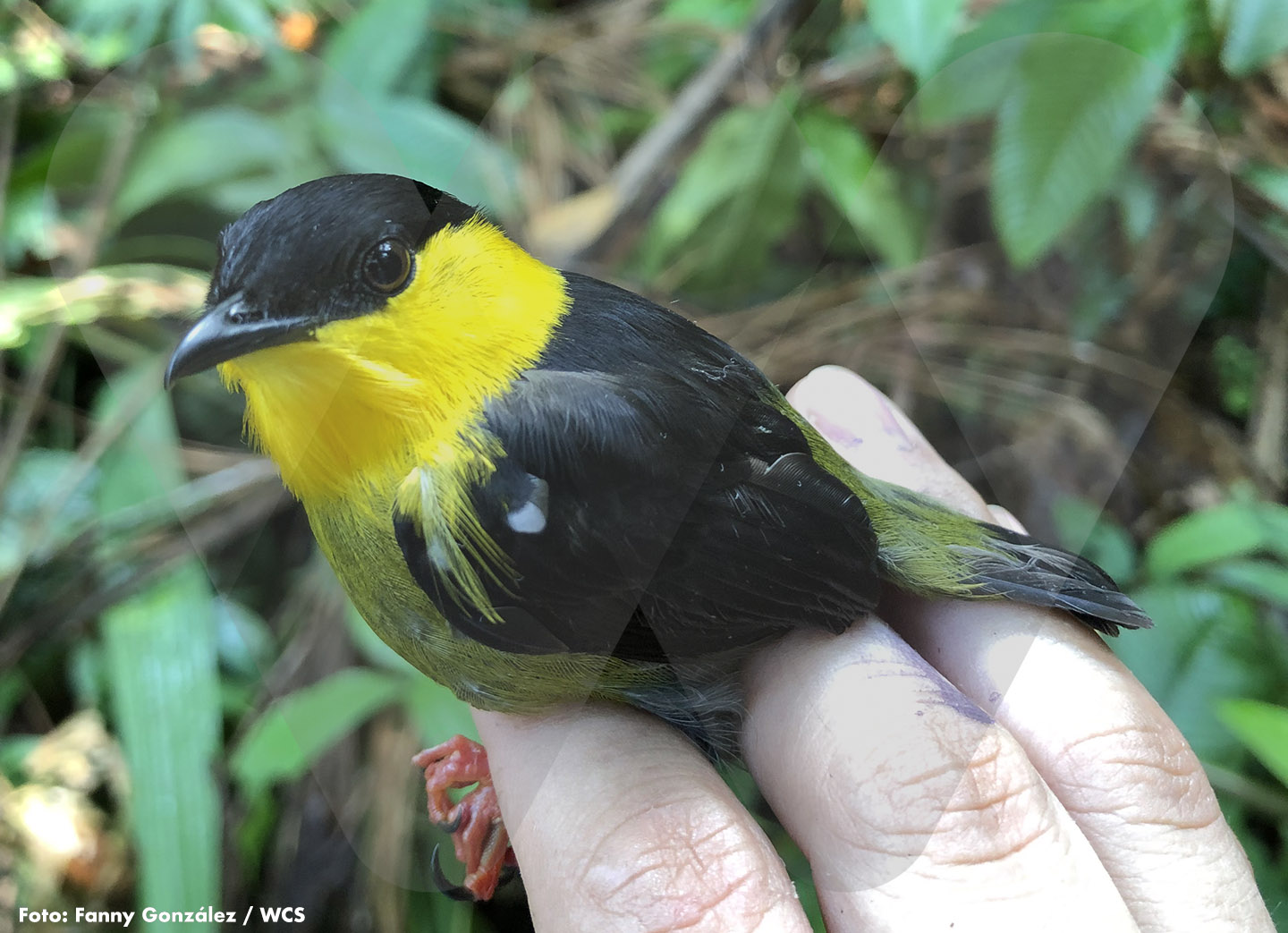Hunting and deforestation threaten hundreds of bird species
 Hylophylax naevioides
Hylophylax naevioides
One of the most dazzling is called Baudo oropendola, endemic to Bajo Baudó, Chocó
The presence of birds in the Integrated Management Regional District ‘El Encanto de los Manglares del Bajo Baudó’ is as normal as a sunset, as the downpours that flood the land or as the sun or the plants that are part of the landscape.
We confirmed this when we joined Fanny González Zapata, biologist of the Universidad del Valle, in one of her rounds during the “Participatory characterization of conservation targets of the Integrated Management Regional District in the Concosta Community Council”, led by WCS Colombia, together with the Concosta Community Council and Codechocó. The evidence of the diversity of this group of animals was clear when we crossed an estuary, walked through a forest or wandered through a mangrove.
Trills of all tones and intensities are heard, birds that fly past as if trying to escape from humans that lurk. And many times we saw them at a distance, in profile or as silhouettes, as if they knew that we were interested in identifying them. We saw birds standing on a tree trunk or perched on a tree top, always with a common characteristic: they all have an unusual combination of colors, some with crests, others with spots, in general, as beings taken out of a fable.
Through analyses based on point counts, use of mist nets, detections ad libitum, camera traps, literature reviews and interviews with the community, Fanny was able to establish a total of 164 species of birds belonging to 24 orders, 44 families and 128 genera, the equivalent to 8% of those recorded in Colombia (the most biodiverse country in the world, with more than 1.900 species) and 24% of those that probably inhabit in Chocó.

The list includes 20 migratory species, one introduced (Columba livia), 11 globally threatened, 7 nationally threatened and one endemic, known as the Baudó oropendola (Psarocolius cassini), typical of Baudó.
The richest ecosystem was the mainland forest with 69 species, followed by the mangrove with 68, the beach with 28, the freshwater swamp with 23 and the estuaries with 3.
Among the species identified are: the Baudo guan (Penelope ortoni), the Choco tinamou (Crypturellus kerriae), the great curassow (Crax rubra), the ruddy pigeon (Patagioenas subvinacea), the brown wood-rail (Aramides wolfi), the plumbeous hawk (Cryptoleucopteryx plumbea), the spiny-faced antshrike (Xenornis setifrons), the great tinamou (Tinamus major), the yellow-throated toucan (Ramphastos ambiguus), the mealy parrot (Amazona farinosa), the cinnamon teal (Spatula cyanoptera), the scarlet-rumped cacique (Cacicus uropygialis) and the Colombian crake (Mustelirallus colombianus)
 Xenops minutus
Xenops minutus
“All of these species should be included in conservation processes as they are threatened to some degree, according to the International Union for Conservation of Nature (IUCN) and the Libro Rojo de Aves de Colombia (Red Book of Colombian Birds)” concluded the researcher.
This is due, in part, to the deforestation caused by the use of timber and the expansion of farming zones for rice crops and coconut plantations. Additionally, hunting was also identified as an activity that has influenced the decrease of bird populations. Among the species most coveted by hunters are ducks and guans. However, for the community, any bird is suitable for feeding purposes. Or they may end up in illegal traffic nets or even as pets.
In her report, Fanny recommends population studies for the threatened species, to focus efforts on conservation. Especially, if the species are in sustainable use zones, strategies that help in their conservation can be laid out and agreed upon jointly with the community. One of them could be a closed season during reproductive periods.
Other recommendations are: studies on the impact of hunting and promotion of the conservation of mangrove and mainland forests and of responsible birdwatching tourism as economic alternative for the protected area. This latter option would give the region’s inhabitants an opportunity to receive additional income through an activity that, at the same time, would encourage a reduction in environmental damage.
 Manacus manacus
Manacus manacus